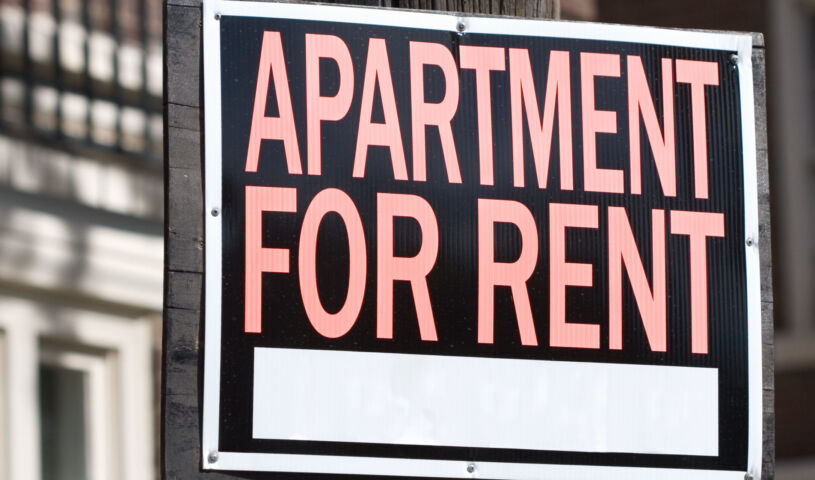Canada’s rental vacancy rate reaches record low
 In most major housing markets in Canada, strong demand is significantly higher than the number of rental homes available, resulting in lower affordability across the country. Photo: Adobe Stock
In most major housing markets in Canada, strong demand is significantly higher than the number of rental homes available, resulting in lower affordability across the country. Photo: Adobe Stock
The number of vacant rental units in Canada has reached a 36-year low amid demand that far outstrips supply. That’s according to the Canada Mortgage and Housing Corporation’s (CMHC) 2024 Rental Market Report which was released last month.
In most major housing markets in Canada, strong demand is significantly higher than the number of rental homes available, resulting in lower affordability across the country.
In 2023, the national vacancy rate reached a new low of just 1.5 per cent – the lowest recorded rate since CMHC began recording a national vacancy rate in 1988.
“Again in 2023, strong rental demand continued to outpace supply in communities across the country, making it very difficult for renters to find housing they can afford,” said Kevin Hughes, CMHC’s deputy chief economist. “The vacancy rates and rent increases we are observing are further evidence the current level of rental supply in Canada is vastly insufficient and the need to increase this supply is urgent.”
Hughes said that the numbers are “staggering but they should be in no way surprising.”
Rental Prices Up Nationwide
Low availability means rental prices have continued to increase nationwide. CMHC’s report stated that rents have continued to rise across the country’s largest cities. Among the largest markets, Calgary and Edmonton saw the sharpest rise in rents. Toronto, Montreal, and Vancouver also saw rents rise significantly.
The secondary rental market, or rented condominium market, also tightened in 2023. The average vacancy rate for rented condominiums in the 17 census metropolitan areas (CMAs) surveyed by CMHC fell to 0.9 per cent in 2023, down from 1.6 per cent in 2022.
“It used to be the case that a rented condominium unit was much more expensive than a traditional rental. In some markets in Canada, it’s nearly the same. So that’s another indication of how tight the market is,” Hughes said.
The average rent for two-bedroom purpose-built apartments accelerated sharply to eight per cent in 2023 from 5.6 per cent in 2022. “This is a new high, well above the 1990-to-2022 average of 2.8 per cent,” the report says.
Rental Supply Slowing Down
While Vancouver and Toronto have traditionally been the poster-cities for housing shortages and unaffordability, the trend has been spreading elsewhere. Montreal’s vacancy rate dropped to a low not seen since before the pandemic, while Calgary and Edmonton both have their lowest vacancy rates in a decade.
The vacancy rate in Greater Montreal fell again in 2023, from two per cent to 1.5 per cent. “This situation is particularly concerning given that supply growth is expected to slow in 2024,” the report states. “In recent months, fewer projects have been started due to rising construction and financing costs.”
Meanwhile, in Quebec City, CMHC reports the market has grown even tighter. “The vacancy rate for 2023 was 0.9 per cent in the Québec census metropolitan area, a low level not seen in about 15 years.” Rents in the metro area grew by 4.8 per cent in 2023, the highest level since 1990.
In Calgary, the average rent for a two-bedroom purpose built rental unit is now just under $1,700. For condominium units, the figure is over $1,800. Calgary tied Toronto in 2023 for the second-lowest vacancy rate out of the six largest Canadian cities markets, as Calgary was particularly affected by high levels of interprovincial migration, in addition to significant international migration.
“While the vacancy rates in the Southeast and Fish Creek zones remained unchanged, the highest declines were recorded in the Downtown and Beltline zones,” the report found.
Prairies Facing Affordability Issues
The vacancy rate in Regina dropped to 1.4 per cent – the lowest level since 2013. While in Saskatoon, the rate fell to two per cent. Saskatoon had the highest turnover rate among Prairie cities at 36.5 per cent. Parts of the city, however, saw a turnover rate of almost 50 per cent.
“These are the lowest vacancy rates in a decade and demonstrate that purpose-built rental supply cannot keep up with the population growth that Saskatchewan is experiencing,” said Cameron Choquette, CEO of the Saskatchewan Landlord Association.
Choquette added that while rental rates are up approximately eight per cent in the province, Saskatchewan still has “some of the most affordable rental rates across the country.” Regina’s market is the most affordable in the Prairies.
The average rent for a two-bedroom unit in Regina represents a smaller share of average-wage earnings than in other Prairie cities like Calgary, Edmonton, or Winnipeg.
The report added that homebuying in the city also remains relatively affordable. “Decreasing homebuying affordability may put more pressure on Regina’s rental market, but likely not to the extent seen in less affordable markets where declining affordability has pushed homebuying out of reach.”
Choquette said he is hopeful that the federal Housing Accelerator Fund will be prioritized to support building more rental units, but he added that “we also need the Government of Saskatchewan to step up and provide leadership on the housing file, specifically by removing PST on rental construction so that we can incentivize development and have a more competitive taxation environment.”
Small Towns Also Under Pressure
Hughes said that while the trend might be most acute in larger urban centers, rental markets in smaller cities and towns are also feeling the pressure.
“Several of these rental pressures that are converging especially in the major centers – that’s where the problem is the most acute,” Hughes said. “It doesn’t mean that it hasn’t touched centers of lower population.”
While the report mentioned several pressures on Canada’s housing market, it highlighted that Canada is simply not building enough homes to meet demand.
Calgary’s supply grew by 6.2 per cent between October 2022 and 2023. That was followed by Edmonton at 3.7 per cent and Vancouver at 2.7 per cent. Meanwhile, Canada’s largest city, Toronto, saw a decline in supply of 0.5 per cent. MW
✯ Municipal World Executive and Essentials Plus Members: You might also be interested in Daair’s article: More cities impose vacant home tax to fill empty condos.
Ibrahim Daair is Staff Writer at Municipal World.
Related resource materials:



